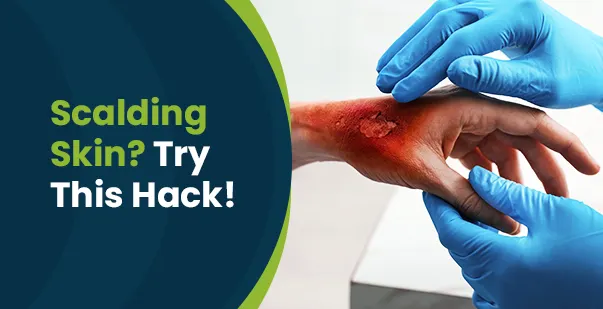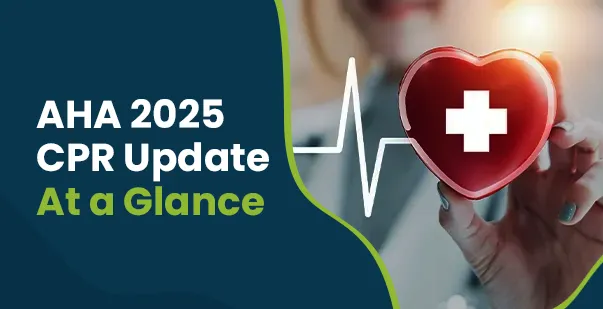Hot water burns, also known as scalds, are among the most common household injuries, especially in kitchens and bathrooms. According to a study published in the Journal of Burn Care & Research by the American Burn Association, scald burns account for over 35% of all burn injuries in the United States, with children under five and older adults being the most vulnerable due to their thinner skin and slower reaction times. These burns can range from mild redness to severe blisters and deep tissue damage, often leading to infections and long-term complications like sepsis or cellulitis if not treated promptly. Thus, everyone should learn first aid for scalding to reduce pain and help the skin heal faster. Quick action can stop the burn from getting worse and help your skin heal fasterActing fast can prevent the wound from worsening and promote rapid healing. So, read on to learn how to treat scalding injuries properly and when to seek medical help.
What are Scalding Injuries?
Scalds are burns caused by hot liquids or steam. They result from wet heat, like boiling water or steam exposure. Unlike burns from chemicals, electrocution, or open flames, scalds happen due to direct contact with hot fluids, such as boiling water, hot drinks, cooking oil, or steam. The heat from the liquid damages the skin, leading to pain, redness, blisters, and, in severe cases, deep tissue injury. Scalds can happen in homes, workplaces, and public places.
The severity of a scald depends on:
- Temperature of the liquid: Higher temperatures cause more severe burns. Water at 150°F (65°C) can cause a deep burn in five seconds, while at 120°F (49°C), it takes about five minutes.
- Duration of contact: The longer hot liquid stays on the skin, the worse the burn. Quick removal can prevent deep damage, but even one second of exposure to boiling water (212°F / 100°C) can cause a third-degree burn.
- Sensitive areas: The face, hands, and genitals are more vulnerable due to thinner skin and high nerve concentration, making burns in these areas more painful and prone to complications.
- Skin thickness: Thinner skin burns faster and deeper. Children and older adults have delicate skin, which can sustain severe burns in half the time compared to healthy adult skin.
Scalds can range from mild burns that heal quickly to severe injuries that need first aid for scalding treatment.
What Are The Causes of Scalding Injuries?
Scalding injuries can happen in seconds and leave lasting damage. From kitchens to workplaces, hot liquids and steam are common hazards. In fact, more than 500,000 scald burns are treated in the U.S. each year, according to the American Burn Association. Some of the most common causes of scalding injuries include the following:
Hot Liquids and Beverages
Spilled coffee, tea, soup, or hot water are among the most common culprits. These accidents often occur in kitchens, restaurants, or while handling containers without lids or insulation. Children and the elderly are especially vulnerable.
Steam Exposure
Steam from cooking appliances, industrial equipment, or even a hot shower can cause severe burns. As steam carries more heat than boiling water, contact, especially with facial skin or hands, can result in deeper tissue damage.
Hot Bath or Shower Water
Setting water heaters above 120°F significantly increases the risk of scalds. People with limited mobility or slower reaction times may not move away quickly enough, making the injury worse before they can seek help.
Cooking-Related Accidents
Grease splatters, boiling pots, and steam from lids being lifted too quickly all pose burn risks. Distractions or a lack of protective gear can make common cooking activities dangerous, particularly in busy home or commercial kitchens.
Faulty Equipment or Lack of Safety Controls
Defective appliances, broken thermostats, or the absence of temperature controls can cause sudden bursts of hot water or steam. This is especially dangerous in industrial settings, where pressure buildup may also lead to explosions or leaks.
How Many Types of Scalding Burns?
Scalds are classified into three types based on how deep they penetrate the skin. Most scalds are first- or second-degree burns, but third-degree burns can occur with prolonged contact or extremely hot liquids. Each type has different symptoms and requires specific care.
First-Degree Burns
First-degree burns are the mildest type of scald. They only affect the outer layer of the skin, called the epidermis. The skin looks red, feels dry, and may be painful. There are no blisters. Swelling is usually mild, and the skin may peel as it heals. The pain from a first-degree burn is often compared to the discomfort felt when touching a hot cup of tea, which results in tea pain. It can be irritating, but it usually fades within a few hours or days with proper care.
Healing Time
First-degree burns usually heal within 3 to 5 days. The skin may peel, but there is no scarring. Proper first aid, such as cooling the burn with water and applying a moisturizer, can help the skin heal faster.
Second-Degree Burns
Second-degree burns are more serious because they damage deeper layers of the skin. They affect both the outer layer (epidermis) and the second layer (dermis). The skin may appear red, swollen, and covered with blisters. These burns are very painful because the nerve endings in the dermis are affected. If the burn is large or gets infected, healing may take longer.
Healing Time
Minor second-degree burns can heal in 10 to 14 days with proper care. Larger or deeper burns may take up to 3 weeks. Blisters should never be popped, as this increases the risk of infection and scarring. In fact, blisters act as a natural barrier. They protect the skin and reduce the chance of infection. If a second-degree burn covers a large area or is on the face, hands, feet, or joints, medical attention is needed.
Third-Degree Burns
Third-degree burns are the most serious type of scald injury. They destroy all layers of the skin, including the nerves, and can reach the muscles, fat, and even bones.
As the nerves are damaged, the person may not feel pain in the burned area. However, the surrounding areas can still be painful due to partial nerve damage. The skin may appear white, black, brown, or leathery. These burns do not heal on their own and require immediate medical care.
Healing Time
Third-degree burns take weeks or months to heal and usually require skin grafts. Without treatment, they can lead to infections, permanent scarring, and loss of function in the affected area. Immediate medical attention is necessary to prevent complications.
Step-by-Step Guide On First Aid for Scalding
Acting quickly after a scalding injury can minimize damage, ease pain, and prevent complications. The main steps involved in the first aid for scalding are discussed as follows. They will help treat a scald effectively and promote faster healing:
1. Remove the Heat Source
Move away from the hot liquid or steam immediately. If clothing is soaked with hot liquid, remove it carefully to prevent further burns. However, do not remove clothing that is stuck to the skin, as it may peel away layers of skin and worsen the injury. Instead, cool the area with running water and seek medical help.
2. Cool the Burn
Hold the burned area under cool (not cold) running water for at least 10–20 minutes. If running water is not available, use a clean, wet cloth. This helps lower the temperature of the skin and reduces pain. Do not use ice, as it can make the injury worse by restricting blood flow and potentially deepening the burn.
3. Cover the Burn
Gently cover the burn with a clean, non-stick bandage or cloth. This protects the skin and prevents infection. Avoid using adhesive bandages on burns, as they can cause more pain when removed.
4. Relieve Pain
You can take over-the-counter pain relievers like ibuprofen or acetaminophen to reduce pain and swelling. Always follow the recommended dosage instructions. If possible, raise the burned area above heart level. This helps reduce swelling and improves blood flow.
Read More: First Aid for Frostbite: Causes, Symptoms, and Treatment
How to Treat Minor Hot Water Scalds at Home
Spilling hot water can be more than just a little mishap, it can leave you with a painful burn. But don’t panic! With the right steps, you can quickly treat minor scalds at home, ease the pain, and get back to enjoying your day. Follow these steps to care for a minor scald at home:
1. Keep the Area Clean
Clean the burned area gently with cool water and mild soap. Do not use hot water, as it can worsen the burn. Avoid scrubbing the skin, as this can cause irritation and increase the risk of infection. Pat the area dry with a clean towel.
2. Apply Moisturizer
Keeping the burned skin hydrated helps reduce itching and prevents dryness. Use silver sulfadiazine cream, petroleum jelly, or aloe vera gel. Silver sulfadiazine cream has antibacterial properties, making it effective against both gram-positive and gram-negative bacteria. This helps to prevent infection in deeper burns. For best results, choose fragrance-free moisturizers, as scented products may cause irritation. Avoid butter, oils, or harsh creams, as they can trap heat and worsen the burn.
3. Change the Bandage Daily
Cover the burn with a sterile, non-stick bandage to protect it from dirt and bacteria. Change the bandage once a day or whenever it becomes wet or dirty. Avoid using adhesive bandages directly on the wound, as they can stick to the skin and cause pain when removed.
4. Avoid Sun Exposure
Burned skin is very sensitive and can be easily damaged by the sun. Exposure to UV rays can trigger excess melanin production, leading to pigmentation changes such as dark spots or uneven skin tone. It can also slow down healing and increase the risk of hypertrophic scarring or permanent discoloration. If going outside, cover the burn with clothing or apply sunscreen with SPF 30 or higher to protect the healing skin.
Complications of Scalding Injuries
If a scalding injury is not treated properly, it can lead to serious complications. For example, if the burn creates an open wound and bacteria enter the affected area, it can result in cellulitis or sepsis, a life-threatening infection that spreads throughout the body. Proper cleaning, dressing, and timely medical care are essential to prevent such infections and promote healing.
1. Infections
As discussed above, infections can slow healing and may spread to other parts of the body if left untreated. Some common signs of infection include:
- Increased redness around the burn
- Swelling and warmth in the area
- Pus or fluid leaking from the wound
- Fever or chills
- Increased pain after the initial healing phase
Infections can be dangerous if they spread into the bloodstream. This condition, called sepsis, can be life-threatening. To prevent infections, burns should be cleaned gently, covered with a sterile bandage, and checked regularly for any signs of worsening. If an infection develops, a doctor may prescribe antibiotics.
2. Scarring
Deep burns can cause scars, which are thickened areas of skin that form as the body heals. Scarring happens when the deeper layers of skin are damaged, and the body produces extra tissue to close the wound. Factors that increase the risk of scarring:
- Large or deep burns
- Burns that became infected
- Picking at blisters or peeling skin
- Lack of proper wound care
Scars can be permanent, but proper care can make them less noticeable. Keep the skin moisturized, protect it from the sun, and gently massage the scar with a moisturizer. Using doctor-recommended treatments like silicone gels can also help with healing. For severe scars, medical treatments like laser therapy or skin grafting may be needed.
3. Nerve Damage
Nerve damage is a common complication of severe scalding injuries, with studies showing that up to 20% of burn victims experience some form of nerve damage, depending on the depth and severity of the burn. Nerves help send signals between the skin and the brain, allowing people to feel pain, temperature, and touch. When nerves are damaged, a person may lose feeling in the burned area or experience abnormal sensations.
Signs of nerve damage include:
- Numbness or loss of sensation
- Tingling or burning sensations
- Weakness in the affected area
- Difficulty moving the burned body part
Nerve damage can be temporary or permanent, depending on how deeply the burn affects the tissues. In some cases, physical therapy or surgery may be needed to restore function. However, it is essential to note that nerve regeneration can take months or even years.
Can Burns And Scalds Be Prevented?
Yes, burns and scalds can be prevented with proper precautions. In fact, approximately 70% of burn injuries are preventable through safety measures like childproofing, proper handling of hot liquids, and installing safety devices in the home (Source: National Fire Protection Association). Here are some effective ways to reduce the risk:
Adjust Water Heater Temperature
A too-hot water heater can cause accidental burns, especially in children and older adults. To stay safe, set your water heater to 120°F (49°C) or lower. This keeps the water warm enough for daily use but not hot enough to cause burns.
Test Water Before Use
Always check bathwater temperature before helping kids or elderly family members bathe. Use your hand or a thermometer to make sure it’s just right. A quick test can prevent painful scalds and keep bathing safe for everyone.
Use Stove Safety Precautions
A simple kitchen mistake can lead to burns. Turn pot handles inward so they don’t stick out, making it harder to knock them over accidentally. Also, keep hot liquids away from table edges where kids or pets might spill them.
Be Cautious with Hot Drinks
Hot tea, coffee, or soup can burn skin in seconds. Never hold a child while drinking a hot beverage; even a small spill can cause a serious burn. Always keep hot drinks out of reach to prevent accidents.
Install Anti-Scald Devices
A sudden burst of hot water from the tap can be dangerous. Anti-scald devices, like faucet thermostats or valves, help regulate the temperature. Installing them is a simple way to prevent unexpected hot water burns, especially in homes with young kids or seniors.
Educate Children About Heat Dangers
Kids are naturally curious, so it’s important to teach them about hot surfaces like stoves, steam, and open flames. Setting clear rules, like not touching hot pots or playing near the kitchen while cooking, helps prevent burns.
Wear Protective Gear
Using the right protection can prevent serious burns. Always wear oven mittens when handling hot cookware, and if you work in a high-heat environment, use protective gloves. A little precaution can save you from painful burns.
Proper Care for Scalding Injuries
Scalding injuries are painful but can be managed effectively with quick first aid. Cooling the burn, keeping it clean, and protecting the skin can promote healing. For minor burns, honey has natural antibacterial properties and can be used if medical-grade options aren’t available. However, avoid home remedies like butter or ice, as they can worsen the injury.
Seek medical help if the burn is large, deep, or shows signs of infection. Preventive measures, such as adjusting water heater settings and handling hot liquids carefully, can reduce the risk of scalds. Knowing proper first aid for scalding makes a big difference in recovery and overall health. Taking a certified course, like the CPR/AED & First Aid Combo, can help you respond confidently to burns and other emergencies.
FAQS
1. How long does it take for a scald to stop stinging?
The stinging sensation from a scald usually lasts for a few hours to a day, depending on the severity of the burn. Cooling the burn with cold running water for at least 20 minutes can help reduce pain. Applying an unscented moisturizer or aloe vera gel can also soothe the skin and provide relief.
2. Should you cover a scald or let it breathe?
A minor scald can be left uncovered if it is in a clean environment, but covering it with a sterile, non-stick dressing helps protect it from dirt and bacteria. If blisters form, keep the burn covered to prevent infection. Change the bandage daily and ensure the area remains clean and moisturized.
3. How can I treat a scald at home?
For a mild scald, immediately cool the burn under cold running water for at least 20 minutes. Avoid using ice, butter, or oil, as they can worsen the burn. Gently pat the area dry, apply an unscented moisturizer, and cover it with a sterile dressing if needed. Keep the burn clean and avoid touching blisters.
4. What do you put on the skin after scalding?
After cooling the burn with water, apply an unscented moisturizer, petroleum jelly, or aloe vera gel to keep the skin hydrated. Avoid using creams with alcohol, fragrances, or strong chemicals, as they can irritate the burn. If the burn is severe, seek medical advice before applying any antibiotic ointment or creams.









